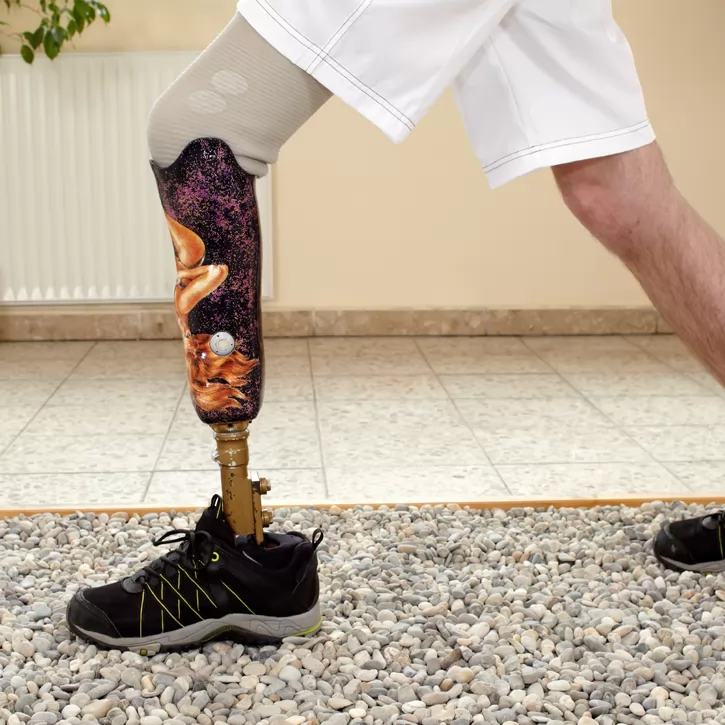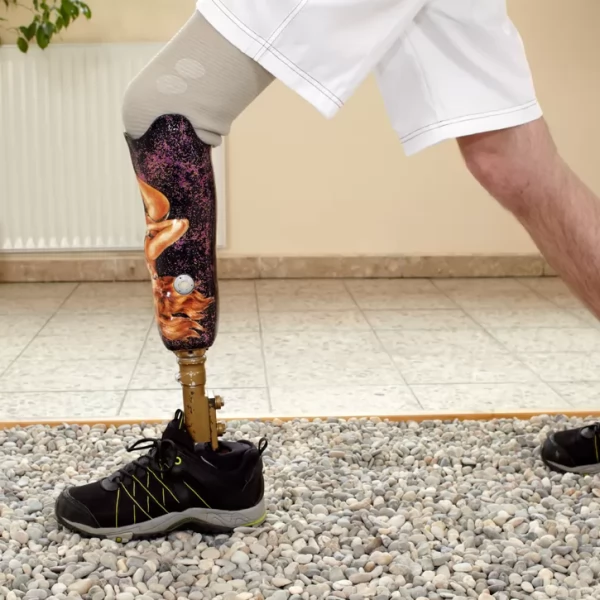Below Knee (Transtibial) Prostheses
Product Categories
Below Knee (Transtibial) Prostheses
TRANSTIBIAL PROSTHESES
Transtibial prostheses (below-knee prostheses) are used after amputation of the lower part of the leg while preserving the knee joint. These prostheses are quite effective and common because they offer the advantage of full knee function.Components of Below-Knee Prostheses:
Socket: The part where the residual limb is placed and the prosthesis is fixed to the body. It is custom-shaped and includes soft inner liners to increase comfort.Attachment System: Ensures the prosthesis is secured to the residual limb. This system is usually done by vacuum, straps, or pin locks.
Shank: The structure connecting the socket to the foot component. Typically made of materials like carbon fiber for durability and lightness.
Foot Component: Varies according to the user’s needs and activities. It ranges from basic solid feet to energy-storing carbon fiber feet, and even microprocessor-controlled feet.
Advantages of Below-Knee Prostheses:
Natural Walking: Preservation of the knee joint allows more natural walking with less energy expenditure compared to above-knee prostheses.Fast Adaptation and Recovery: Below-knee amputations speed up the adaptation process to the prosthesis. Users typically learn to walk faster and more easily.
High Mobility: Offers a wide range of motion for daily life and sports activities.
Suitability for Physical Activities: Flexible and durable below-knee prostheses are specially designed for athletes and active individuals.


